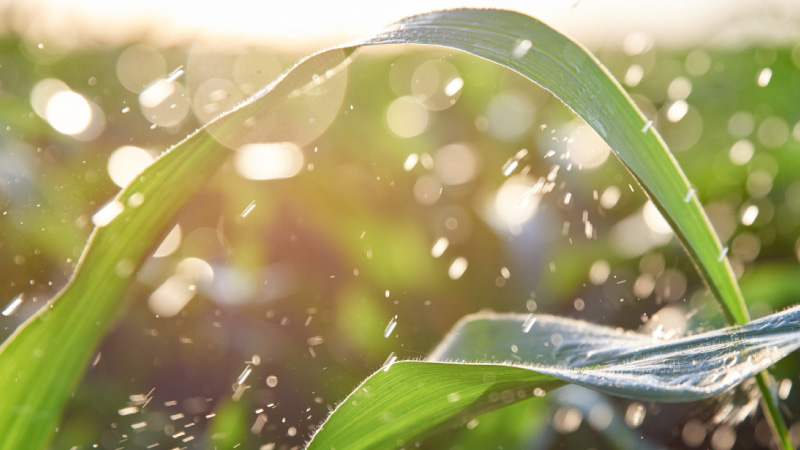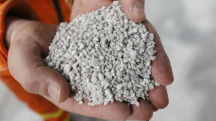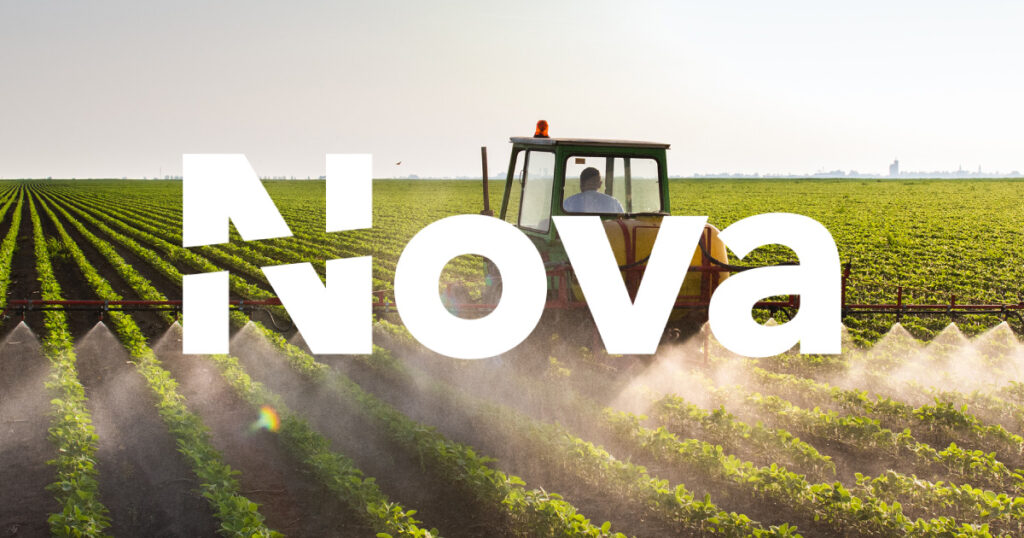Ask an Agronomist: To Foliar or Not to Foliar?

Ask an Agronomist:
To Foliar or Not to Foliar? Exploring a Complementary Approach.
Foliar application of nutrients often results in strong opinions among farmers and agronomists. However, this approach, widely adopted in many high-value specialty crops, is gaining popularity among row crop producers. Negative views toward the foliar application of nutrients often result from over-hyped outcomes. We asked ICL’s North American Agronomy Lead, Jason Haegele, PhD., about the realistic and unrealistic expectations for foliar-applied plant nutrition. Here’s the dirt. The Agronomist
The Agronomist
Jason Haegele, PhD., North American Agronomy Lead
Jason Haegele leads ICL’s research collaborations with universities and third-party research contractors in North America. He has a broad range of experience in applied research and field sales support for plant nutrition, adjuvants, crop protection, and biological products. He is a graduate of the University of Illinois and Iowa State University.
Foliar-applied plant nutrition: is it a good idea?
Foliar-applied nutrition does not entirely replace soil application. Although foliar application is frequently positioned as being more efficient foliar application will never wholly replace soil applications. Instead, consider foliar application as a complementary approach to soil application. Build a strong foundation for plant nutrition with soil testing and appropriate amounts of dry, liquid, or fertigated applications of nutrients, and use foliar applications to smooth out the peaks and valleys of plant nutrient uptake. Plant roots are well-designed to take up nutrients and water. Still, many potential conditions – soil compaction, excess and deficient soil water, root-feeding insects, and pathogens to name a few – can limit nutrient uptake throughout the growing season. Use foliar application to supply nutrients at key growth and development transitions to maximize plant productivity when the roots cannot keep up.
Which nutrients are most effective in foliar applications?
Nutrients required in small amounts, or those with limited soil availability due to difficult-to-manage factors like soil pH, are great candidates for foliar applications. Micronutrients are often the top consideration for foliar applications due to the small quantities needed and pH-dependent soil availability to plants. Copper, manganese, and boron are also especially well-suited to foliar applications, and foliar application of zinc and iron is a good approach in combination with soil applications of chelated forms. New introductions to ICL’s Nova portfolio of water-soluble fertilizers in North America, including Nova ELEVATE™ and Nova PULSE™, are designed to deliver a range of essential micronutrients in foliar-specific formulations.

What about macronutrients?
Foliar application of macronutrients (like N, P, and K) often creates controversy. Admittedly, 5 to 10 pounds per acre of these nutrients is a small percentage of the total amount required by a crop, but the context of how a foliar application is used is essential. A small amount of foliar-applied N, P, or K will not be adequate to meet season-long uptake demand. But, applied at the right time, and rate these nutrients can be beneficial for maximizing photosynthetic activity and yield potential, especially if conditions for deficiency exist. ICL’s Nova HiPeak (0-44-44) for example, is low in salt, free from chloride, and high purity. Although highly soluble, you don’t need to worry about phytotoxicity or leaf burn making it a suitable choice for foliar applications of phosphorus and potassium, even for delicate crops.
When should foliar applications be applied?
As an agronomist, I focus on ensuring adequate nutrient availability, and using foliar applications, during key time points that establish the trajectory for growth and yield potential. For example, certain nutrients or combinations of nutrients will be required by a corn plant to: establish a strong root system, determine kernel row number at V5, determine potential ovule number and ear length through the later stages of vegetative development, and maximize pollination and kernel set. Foliar applications should be designed with an understanding of the plant physiology occurring at the time of the application. This considers things like vegetative stages of growth and development and important vegetative to reproductive transitions.
Are all sources of plant nutrients marketed for foliar application created equally?
Formulation technology for plant nutrients can make a large difference in foliar uptake of nutrients and realized performance in the field. Remember, leaves have a different function and design compared to roots. Although leaves can, and do, absorb nutrients, metal nutrients like micronutrients are more challenging. Micronutrient formulations using chelating agents like EDTA are well understood and used effectively for soil applications, but strong chelation may not always be needed or appropriate for foliar applications. Commonly, foliar formulations contain other constituents like carbohydrates, amino acids, or surfactants to promote and improve nutrient uptake. When considering options for foliar-applied nutrients, do not just consider the concentration of nutrients and product cost. Making sure that the applied nutrients are absorbed by the plant and resulting in a positive ROI for the grower is of equal, if not greater, importance.

Plant tissue analysis: how should it be used?
Foliar applications are often based on a prior tissue nutrient concentration analysis of a plant leaf, petiole, or sap. This approach is useful for benchmarking progress over the course of a growing season or across years, but interpretation of results is often as much of an art as a science. Even if you do not base the decision of whether to apply on a plant tissue analysis, I encourage the collection of tissue samples in the same part of a field across multiple time points. This approach allows the farmer or agronomist to understand how plant nutrient concentrations change over time in response to weather conditions, plant growth and development, and fertilizer applications. For example, you may find that certain nutrients like phosphorus or sulfur are relatively stable over time and vary by a relatively limited range, while others like potassium decline in concentration as the plant increases in size. By understanding long-term and crop-specific nutrient trends in your local environment, it will be easier to detect anomalies that can be addressed through corrective foliar or soil applications.
For more information or to connect with Jason, visit https://icl-growingsolutions.com/en-us/
or email [email protected]